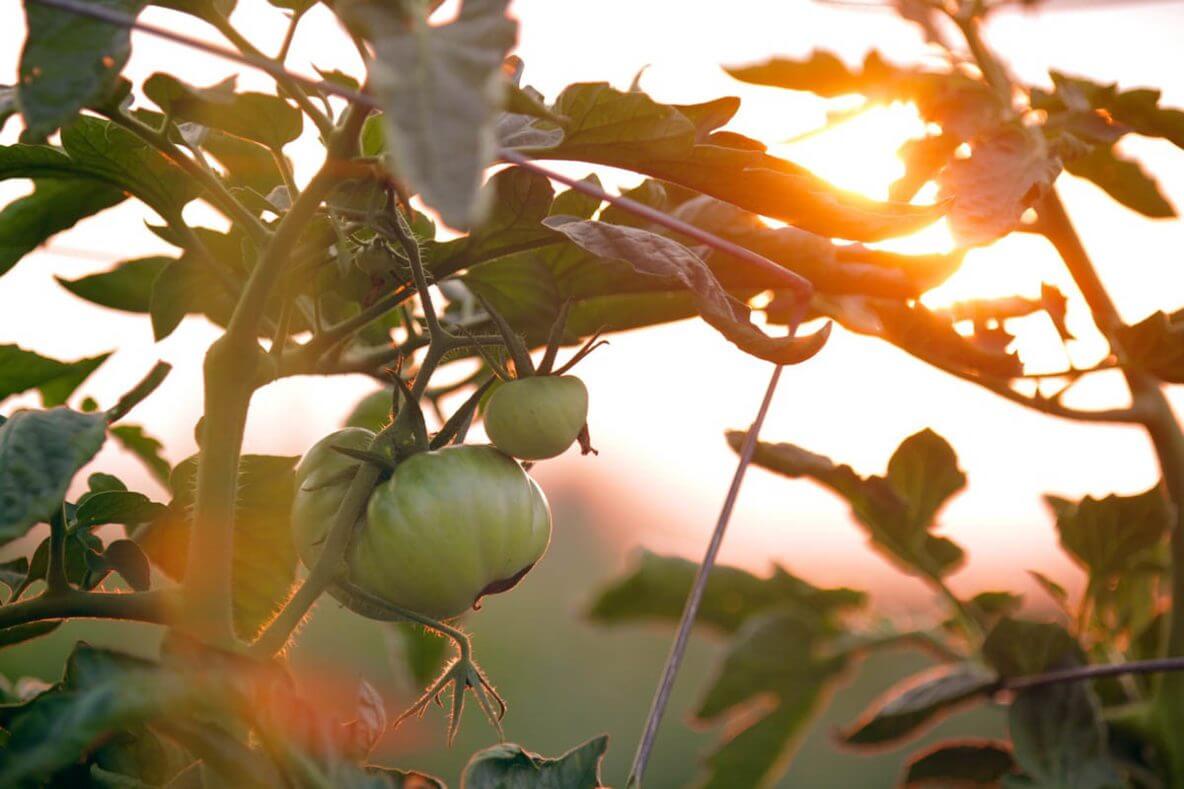
Inhaltsverzeichnis
You can look forward to this vegetable in summer!
Summer isn't just the peak season for fruits. Some vegetables are also just beginning to shine in their full glory, with a much more intense flavor than the rest of the year. Nevertheless, we still have to be patient. Because summer vegetables taste best when it's truly summer here and the vegetables come from close by.
Maybe you need a little cooking inspiration, or you just want to get informed. Either way, you've come to the right place. So let's get started without much further ado!
The ultimate summer vegetable list
tomatoes
They are probably the number one summer vegetable, without a doubt. Not only because they have a particularly intense flavor at this time of year, but also because they combine so well with other vegetables. Moreover, there are countless recipes and ways to use tomatoes. Bruschetta, grilled tomatoes, ratatouille, and pasta salads are just a few examples. Incidentally, cherry tomatoes, in particular, contain many important vitamins.
Bell peppers and chili peppers
Midsummer is also the best time for bell peppers. Our bodies can optimally utilize the vitamins (A and C) contained in the red, yellow, and orange fruits, for example, in the blood and for digestion. Hot peppers are also great for our immune system. The spicy substance in the peppers, capsaicin, is very healthy. It protects the stomach and liver, has anti-inflammatory properties, improves blood quality, and contributes to cancer prevention.
Paprika can also be incorporated into many dishes. If you like it spicy, add chili peppers.
zucchini
This type of pumpkin is also a real nutrient and vitamin bomb: fiber, Minerals and vitamins A, B, and C... Due to their high water content, you might not realize that zucchini contains so many valuable nutrients. The vegetable is quick and easy to prepare. Whether grated, fried, grilled, or stuffed, zucchini is ideal for light and healthy dishes.
aubergine
Am I the only one who somehow always thinks of eggplant when I think of zucchini? It's as if eggplant is a sister of zucchini. Raw, it tastes rather bland, but when roasted, eggplant develops a lot of flavor. This fiber-rich vegetable is also great for grilling, frying, and baking (wrapped in foil). It's also often used as a base for vegetarian or vegan casseroles.
Peas and sugar snap peas
Peas are usually available for a short time starting in July. They're quite delicate, but the good thing is that they don't come from far away. Steamed or in purees and soups (like a cold gazpacho), sweet peas are wonderful. Like peas, snow peas, eaten whole, contain plenty of protein, B vitamins, and calcium. These particularly tender snow peas can be eaten raw as a snack or added to light dishes.
Green beans
This legume is available from the local harvest between June and September. Green beans are 90% water. But they also contain important nutrients such as magnesium, zinc, and B vitamins. They must always be cooked because, when raw, they contain the toxic protein phasin. Eight minutes in boiling salted water solves this problem.The beans can be served hot or cooled and added to salads. Herbs like parsley also go great with green beans!
Mushrooms
Many mushrooms, such as chanterelles and porcini, are in season especially in (late) summer. They not only add protein but also a distinctive flavor to dishes. Like kohlrabi, they can be served raw, cooked, grilled, or baked. In addition to protein, they also provide plenty of iron and are naturally diuretic.
arugula
Arugula belongs to the A vegetable that has risen over the past 30 years. It came to us from Italian cuisine and is now one of the most popular vegetables in this country as well. It is a great source of folic acid, vitamin C, and calcium. Arugula is traditionally combined with olives, onions, salty cheese, and even lemon juice in a salad.
Cauliflower
Also available in summer from the local harvest, cauliflower, with its subtle aroma, appeals even to those who aren't usually so fond of cabbage. Cauliflower is particularly easy to digest, protects the heart, and provides us with vitamin C. This vegetable is also extremely versatile and makes a great addition to more than just a side dish. It can be boiled, steamed, roasted, stewed, baked, and deep-fried.
Kohlrabi
Kohlrabi, as the name suggests, belongs to the cabbage family. In addition to vitamin C, the vegetable contains potassium, which strengthens the immune system. Personally, I like kohlrabi best eaten raw with a dip. But it also goes well cooked in many salads. When buying, it's best to choose small bulbs, as the larger ones often have a woody and earthy taste. It's available from April/May until late summer.
If you enjoyed this and would like to learn more about healthy eating, mindfulness or sustainability, Check out many more exciting blog articles on these topics here.





























Leave a comment
This site is protected by hCaptcha and the hCaptcha Privacy Policy and Terms of Service apply.